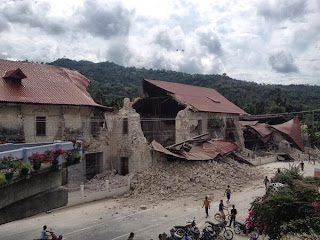Here are some tips on how you can master the 3-minute speech.
1. Expand your definition of a speech.
It’s not just the way you talk for 3 minutes
at the front of a room. It’s the way you interact with the audience before and it’s the way you interact with the audience after. Build audience rapport before even delivering your speech.
2. Do your math.
How long is 3 minutes? Even more basic: How long is 1 minute? Now, the easy answer is: 60 seconds. A minute is 60 seconds. But you
need to know much more about “time management” if you’re going to be an
effective speaker.
It’s time for
a quick lesson on the “rate of speech”. Rate of speech varies by age. Young people talk much faster than older people. It also varies by health. When we’re not feeling well, we prefer to send (and receive) information at a slower pace. Can you see the implications for you as a presenter? A fast pace
that’s terrific for an audience of college students would create a
disconnect at a retiree gathering.
3. Focus your message.
As Will Durant, the US historian, put it: “One of the lessons of
history is that nothing is often a good thing to do and always a clever
thing to say.” When in doubt, leave it out.
4. See if you can tie your message into the date in history.
Suppose you were preparing a speech to deliver today. See if you can
make any connections to this date in history.
5. Make adjustments based on audience demographics.
What is the size of the group? The age range? The male/female ratio?
How much do you know about their educational backgrounds? Their income
levels? Their community priorities? The more you know, the better you can connect.
And remember: In a short speech, you have to connect quickly. There’s
simply no time for long prologues. And you have to connect effectively. There’s no patience for irrelevant examples.
6. Be specific.
Audiences remember specifics. They forget generalities.
An example. It’s from Chris Van Gorder, CEO of
Scripps Health, speaking at the American College of Healthcare
Executives, in his role as Chair-Elect of ACHE:
“San Diego alone has 650 wireless
companies, and many are developing advances for health care. Estimates
say 50 to 60 percent of primary care will be delivered virtually in the
future.
"Wireless band-aids are being developed to monitor your blood pressure, caloric intake, hydration and heart rate.
"New drug delivery patches can be radio controlled … from across town, or across country.
"ECG machines (no bigger than a cell phone, and one-fifth the cost of current equipment) will allow for remote exams.
"Even
pill bottles will include wireless transmitters. Just push a button to
alert the pharmacy when you’re running low on medication.
"Is our future changing? You bet.
"And ACHE will be there to advance our profession – our calling – in these rapidly changing times.”
Did you hear how the use of specific details made this speech more interesting and more memorable?
7. Watch your pronouns
More than anything else, pronouns convey “the friendliness factor.” Pronouns can help pull the audience closer.
Count the number of time you use “we", “you”, and “I”. That ratio tells something about you as a speaker.
For example, “we” conveys camaraderie, cooperation, teamwork. Think
of Winston Churchill in 1941: “Give us the tools and we will finish the
job.”
“You” builds direct rapport with an audience. President Kennedy knew
this when he said: “Ask not what your country can do for you, but what
you can do for your country.”
“I” is important because it conveys the speaker’s voice, the
speaker’s commitment, the speaker’s dedication. Too many speakers shy
away from using “I” – and they’re missing a powerful technique. Listen to Senator Hubert Humphrey’s voice in this line: “I learned more about
politics during one South Dakota dust storm than I got in seven years
in the university.”
8. Give it some style.
Be visual.
When H.R. Haldeman commented on the Watergate affair, he said: "Once
the toothpaste is out of the tube, it’s hard to get it back in.”
Here’s a vivid description from Gerald Ford: “A bronco is something
that kicks and bucks, twists and turns, and very seldom goes in one
direction. We have one of those things here in Washington – it’s called
the Congress.”
There’s nothing new about using visual images to sell your point.
Here’s a memorable comment from Teddy Roosevelt about his predecessor,
William McKinley: “McKinley shows all the backbone of a chocolate
éclair.”
Use rhetorical devices.
Listen to this from Dr. Martin Luther King, Jr: “Morality cannot be
legislated, but behavior can be regulated. Judicial decrees may not
change the heart, but they can restrain the heartless.”
Hear the rhetorical power in this line from Senator Robert Kennedy: “Justice delayed is democracy denied.”
9. Use a light touch of humor.
Don’t use complex jokes. They’re too hard to tell. (Plus, they eat up too much of your limited time,)
Instead, use short one-liners. This is one from Will Rogers: "Alexander Hamilton started the U.S. Treasury with nothing … and that
was the closest our country ever was to being even.”
Who knew how to use humor better than President Ronald Reagan? He
once quipped: “There were so many candidates on the platform that there
weren’t enough promises to go around.”
Listen to this humor from Ann Richards, speaking at the Democratic
Convention: “Twelve years ago Barbara Jordan, another Texas woman, made
the keynote address to this convention, and two women in 160 years is
about par for the course. But, if you give us a chance, we can perform.
After all, Ginger Rogers did everything that Fred Astaire did. She just
did it backwards and in high heels.”
10. Fix your delivery problems.
You only have your voice, your body language and your eye contact.
That’s it. Those are the only delivery tools you have to “sell” your
message.
If your voice needs improvement, start improving. And start now. Ditto with your body language and your eye contact.
Read books. Take classes. Get coaching. Attend presentations. Ask a
colleague to critique your speeches and monitor your improvement. If
you want really candid comments about your delivery skills,
just ask a kid: A kid will always tell you the truth. Your staff might
not venture to say that you have a most annoying way of clearing your
throat whenever you start to speak but a kid will tell you about this
annoying problem flat-out.
11. Consider your A-V options.
You can reinforce a short speech with a wide range of simple
audio-visual options: props, letter from a parent or a friend, music playing
as the audience enters, posters made by local school kids, compelling photographs. The simplest of things (free, or very low cost) can grab an audience’s attention and create a hook for valuable media coverage.
12. Don’t run overtime.
Remember: There are very few people who don’t become more interesting when they stop talking!
Think of speeches as “business investments” in the communities you
serve. Respect your audiences by staying within their timeframe.
A good speech builds audience rapport and leaves an audience wanting to hear you again.
Take a lesson from Mark Twain. He said: “It takes about 3 weeks to prepare a good impromptu speech.” So get started now: Write down 1 key message, and use these dozen guidelines to polish it.
So, the next time someone asks, “Can you speak for a few minutes?", you’ll be prepared to make every second count.
Excerpted from:
Trends, Techniques and Tips
Strictly for Speakers: How to handle the short speech
(http://www.vsotd.com/Article.php?art_num=4371)

























.jpg)